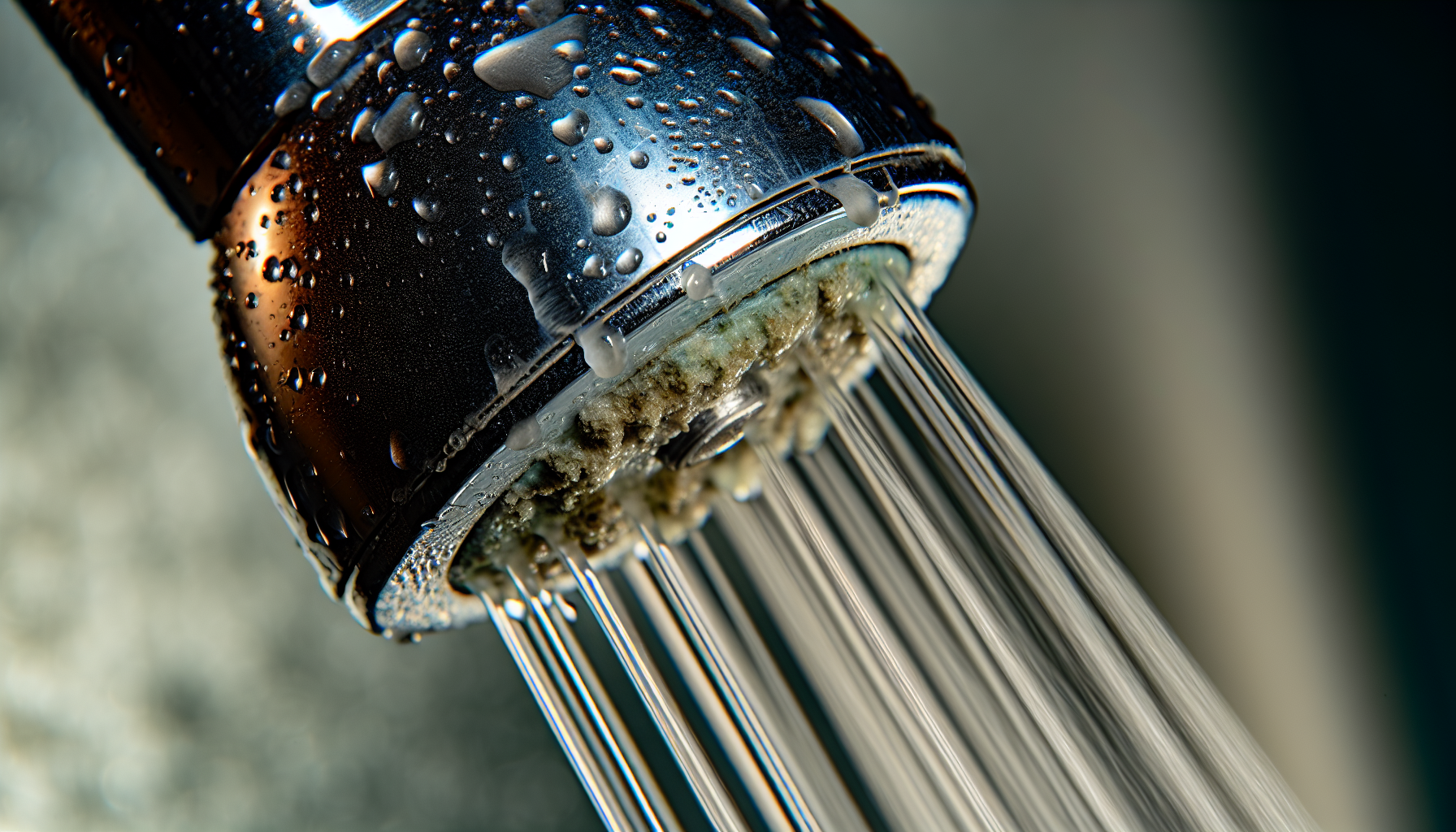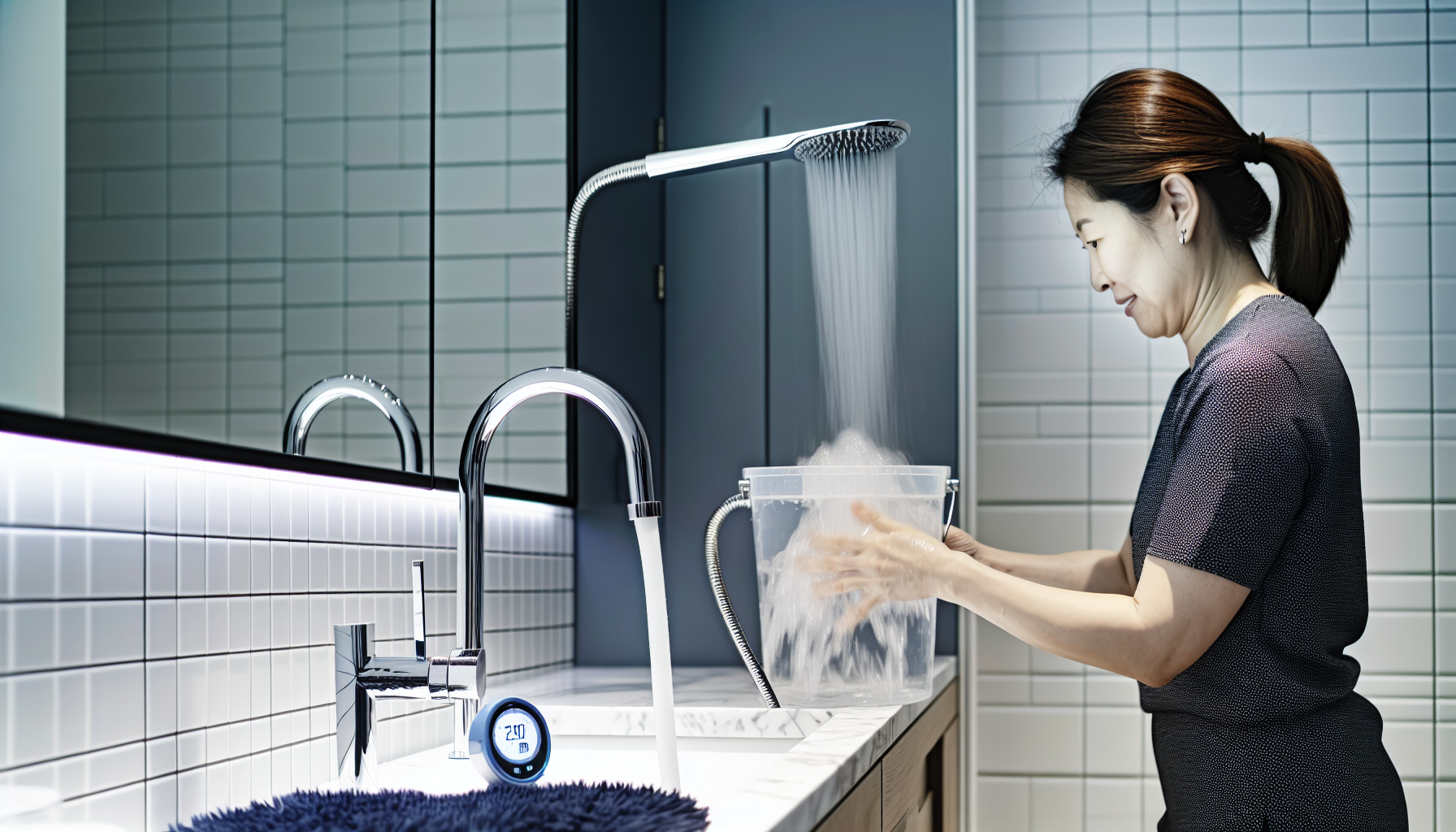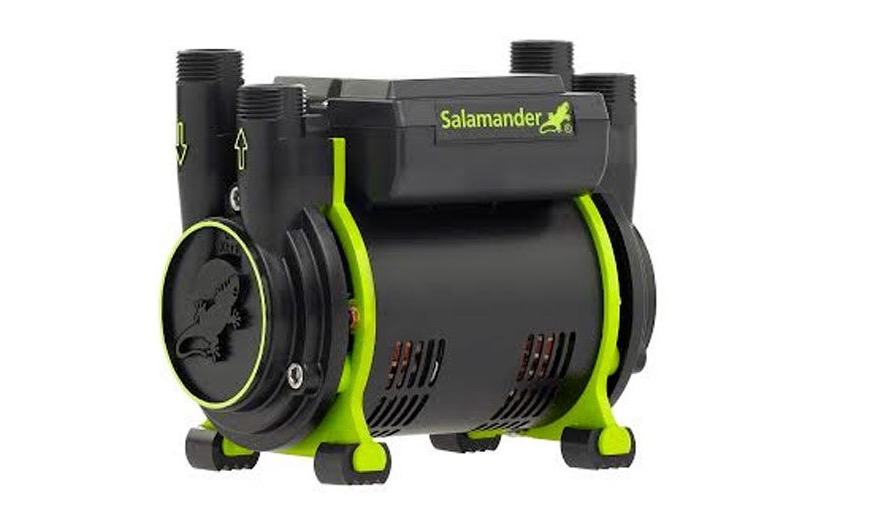If you’re wondering why the water pressure on shower head is low, you’re not alone. This guide cuts directly to the chase, pinpointing the typical reasons and offering effective fixes for situations when the water pressure on shower head is low. Expect a straightforward journey from diagnostic tips to easy-to-implement solutions, ensuring your next shower is as powerful as you need it to be.
Key Takeaways
- Low shower water pressure can be caused by mineral deposits in the shower head, valve problems, or pipe leaks and obstructions.
- Testing your shower’s water pressure can be done using simple methods like a bucket and timer or a pressure gauge to help assess the water flow rate or pressure.
- Fixing low water pressure can often be addressed with easy solutions such as cleaning the shower head, adjusting valves, or replacing the shower hose; for persistent issues, more advanced solutions like upgrading pipes or installing a shower pump may be needed.
Identifying the Causes of Low Shower Water Pressure

Unraveling the causes of low shower water pressure is akin to solving a mystery. The usual suspects range from mineral deposits in your shower head to leaky pipes. We’ll now examine each of these in relation to the pressure issue.
A satisfying shower experience requires your shower head, valves, and pipes to function cohesively. But what happens when one of them doesn’t play its part? The water pressure drops, and your showers become less refreshing. Whether it’s a stubborn mineral deposit in your shower head, a valve mishap, or a sneaky pipe leak, these culprits can disrupt the harmony and leave you with a low-pressure shower.
Mineral Deposits in Shower Head
Hard water is the primary contributor to mineral deposits in shower heads. This water, rich in substances like:
- calcium
- magnesium
- lime
- silica
Stubborn deposits can clog your shower head and hamper water flow, acting as an unwanted flow restrictor. Over time, these mineral deposits can turn your once powerful shower into a disappointing dribble, especially when you’re looking forward to a relaxing hot water shower.
If you’ve cleaned it and the water pressure remains low, considering a shower head replacement might be the next step. After all, even the best things in life don’t last forever. A new handheld shower head, especially one designed for low-pressure situations, can make a significant difference in your shower experience.
Valve Problems
Valves play a critical role in controlling the water flow and pressure to your shower. However, they can be a bit finicky. Sometimes, a shower valve might be accidentally closed, or a mixing valve could wear out over time. Either way, it leads to a noticeable decrease in your shower water pressure.
For optimal water pressure, follow these steps:
- Keep all the valves, including the main water valve and inline valves, fully open.
- Regularly inspect these valves to prevent accidental adjustments that might alter water pressure.
- If you encounter accidental valve shutoffs, locate the valve and set it to ‘on’.
By following these steps, you can ensure that you maintain water pressure in your system and stop wondering why your shower water pressure is suddenly low.
Pipe Leaks or Obstructions
Pipe leaks and obstructions can be stealthy thieves of your shower’s water pressure. Leaks can be caused by:
- corrosion
- freezing temperatures
- physical wear and tear
- mineral buildup
A leak along the water line can result in significant drops in water pressure and even lead to increased costs and potential water damage.
Identifying and repairing leaks can be complex, and sometimes it requires a professional plumber, especially when visible signs of pipe damage arise. You don’t want to risk making the problem worse by trying a DIY fix, only to find out you’ve made a small leak a major one.
Testing Your Shower’s Water Pressure

After identifying the potential reasons for low shower water pressure, the next step is to test it. By testing your shower’s water pressure, you can determine if there is indeed an issue or if you’ve been a victim of your own expectations. There are two primary methods for testing: using a bucket and timer or utilizing a pressure gauge.
These straightforward methods can help you comprehend your shower’s flow rate and its operating pressure. You won’t need sophisticated equipment or complex procedures. With a few simple steps, you can measure the gallons per minute (GPM) or determine the pressure directly from the shower, giving you an accurate insight into your shower’s water pressure.
Using a Bucket and Timer
Measuring the flow rate of your shower is as easy as filling a bucket with water for a set time and calculating the gallons per minute (GPM). To do this, you’ll need to turn on your shower’s cold water to its legal maximum flow rate, set your timer to 10 seconds, and then place your bucket to catch the entire water stream.
To measure the flow rate of water, follow these steps:
- Fill a bucket with water.
- Start a timer.
- Let the water flow into the bucket for exactly 10 seconds.
- Stop the timer and measure the amount of water in the bucket.
- Convert the measured volume of water to gallons (remembering that 1 gallon equals 16 cups or 4 quarts).
- Multiply the converted volume by 6 to find the flow rate in gallons per minute (GPM).
This method is simple and doesn’t require any special equipment, just a bucket, a timer, and some basic math skills.
Utilizing a Pressure Gauge
A pressure gauge offers a more direct method to test water pressure in your shower. For an accurate reading, follow these steps:
- Make sure no other water is being used in your household during the test.
- Remove any connected hoses from the faucet to prevent disturbances in the reading.
- Ensure a good seal when attaching the pressure gauge to avoid leaks and potentially incorrect readings.
The ideal location for measuring water pressure is at an outdoor hose spigot or a faucet near the main water supply line. If these aren’t accessible, the cold water supply faucet for a washing machine can be a viable alternative.
An ideal water pressure for a residential home should range between 40 and 80 psi, with a recommended pressure around 60 psi.
Easy Fixes for Low Shower Water Pressure
After identifying the cause and testing your shower’s water pressure, you can move on to implementing solutions. There are simple fixes that you can implement to restore your shower’s water pressure. From cleaning the showerhead to adjusting valves and replacing the shower hose, these easy solutions can often resolve most low-pressure issues.
These quick fixes will not only enhance your showering experience but also contribute to the upkeep of your plumbing system. So, without further ado, let’s dive into these easy fixes that can help you regain that glorious high-pressure shower you deserve.
Cleaning the Shower Head

Can a dirty shower head affect water pressure? It certainly can. Cleaning the showerhead is one of the easiest ways to restore your shower’s water pressure. It’s no secret that mineral deposits can clog the nozzles of your showerhead, reducing the water flow and pressure. By regularly cleaning the showerhead, you can prevent these deposits from accumulating and ensure a consistent water flow.
To clean your showerhead, you can use white vinegar. Here’s how:
- Soak your showerhead in white vinegar for about eight hours.
- Rinse it thoroughly with water.
- If your showerhead has a brass, gold, or nickel coating, limit the soaking to 30 minutes to avoid damaging the finish.
Adjusting Valves
Another quick fix for low water pressure is adjusting the valves. As we mentioned earlier, valves play a critical role in controlling the water flow and pressure to your shower. If they’re not fully open, they can limit the flow of water, resulting in lower pressure.
By ensuring that all the valves, including the main water valve and inline valves, are fully open, you can improve the water pressure. Remember, it’s also important to regularly inspect these valves to prevent accidental adjustments that could alter your water pressure.
Replacing the Shower Hose
If you’ve cleaned your showerhead, adjusted your valves, and still find yourself struggling with low water pressure, it might be time to consider replacing your shower hose. A kinked or damaged shower hose can disrupt the water flow and reduce the pressure.
Replacing the shower hose is a simple fix that can restore the proper water flow and pressure. Just unscrew the old hose from both ends, select a compatible replacement, and then screw on the new hose. This simple switch can make a big difference in your shower experience.
Advanced Solutions for Persistent Low Water Pressure
If the simple fixes haven’t resolved your shower’s water pressure issue, exploring more advanced solutions might be beneficial. These solutions, which may involve upgrading your pipes, installing a shower pump, or consulting a professional plumber, can help tackle persistent low water pressure issues.
Although these solutions may demand more effort and potentially a larger investment, they often provide a more lasting solution to your low water pressure problems. After all, when it comes to enjoying a refreshing shower, it’s worth going the extra mile.
Upgrading Pipes
One of the more advanced solutions to improve water pressure is upgrading your water pipes. Older pipes are often narrower and can restrict the flow of water, leading to lower pressure. By upgrading to larger pipes, you can accommodate a higher water flow, thereby increasing the pressure in your shower.
Upgrading your pipes can also help prevent leaks and plumbing emergencies, both of which can reduce water pressure. Plus, modern pipes are better insulated and more energy-efficient, leading to savings on your electricity and gas bills. While this solution might require a significant investment, the benefits could be well worth it.
Installing a Shower Pump

Another advanced solution to boost your shower’s water pressure is installing a shower pump. A shower pump uses an impeller mechanism to increase the water flow before it reaches the showerhead, significantly boosting the pressure.
There are two main types of shower pumps: single impeller pumps, which boost a single water supply, and twin impeller pumps, which simultaneously boost hot and cold water supplies. While installing a shower pump may require professional assistance, it can make a significant difference to your shower’s water pressure.
Preventative Measures to Maintain Optimal Shower Water Pressure
After restoring your shower’s water pressure, the goal is to maintain it. Fortunately, there are preventative measures you can take to maintain optimal shower water pressure. By regularly cleaning your shower head, installing a water softener, and avoiding water-intensive activities during peak times, you can keep your showers strong and refreshing.
These preventative measures work towards preserving your shower’s water pressure and extending the lifespan of your plumbing system. So, let’s explore these measures in more detail and learn how to keep your showers at their best.
Regularly Cleaning the Shower Head
As mentioned earlier and worth repeating: regular cleaning of your shower head is vital for keeping up the water pressure. By preventing mineral deposits from building up, you can ensure a consistent water flow from your shower.
Does the shower head determine water pressure? It certainly can. Cleaning your shower head every one to three months can help prevent significant mineral buildup that could reduce your water pressure. Regular cleaning not only maintains your shower pressure but also helps extend the life of your shower head.
Installing a Water Softener

Hard water can be a significant contributor to low water pressure. The minerals in hard water can accumulate in your pipes and shower head, causing clogs that reduce water flow. By installing a water softener, you can remove these minerals and prevent them from causing problems in the future. You can also increase water pressure in the bathroom.
How to shower head water softeners work? A water softener removes minerals like calcium and magnesium, which can cause buildup and clogs. By preventing this buildup, a water softener can help maintain your shower’s water pressure and prolong the lifespan of your plumbing system.
Summary
In conclusion, low shower water pressure is a common issue that can be addressed with a variety of solutions. Whether it’s a simple fix like cleaning your shower head or a more advanced solution like upgrading your pipes, there’s a solution to restore your shower’s invigorating flow. Remember, maintenance is key, and regularly cleaning your shower head and checking your valves can go a long way in preserving your shower’s water pressure.
Frequently Asked Questions
How do I increase the water pressure in my shower head?
To increase water pressure in your shower, you can start by cleaning your shower head and then consider options like replacing it, installing a shower pump, or opting for a power shower. These steps can help improve your shower’s water pressure.
Why is my water pressure low all of a sudden?
If you’re experiencing sudden low water pressure in a specific area, it may be due to corroded, leaking, or blocked supply pipes. If the issue is affecting multiple fixtures in one location, it could be traced back to the plumbing pipes.
How can I test my shower’s water pressure?
You can test your shower’s water pressure by using a bucket and timer to measure the flow rate or by using a pressure gauge for a direct pressure reading. Just follow these simple steps to get an accurate assessment of your shower’s water pressure and begin the process of improving shower pressure.
What are some easy fixes for low shower water pressure?
To improve low shower water pressure, try cleaning the shower head, adjusting valves, and replacing the shower hose. These simple steps can make a noticeable difference in water pressure.
How can I maintain optimal shower water pressure?
To maintain optimal shower water pressure, make sure to clean the shower head regularly, consider installing a water softener, and avoid water-intensive activities during peak times.

